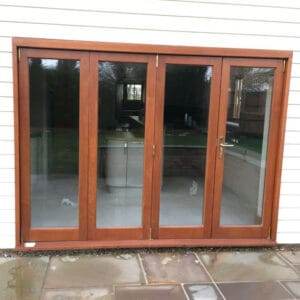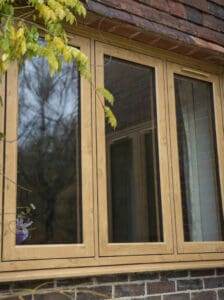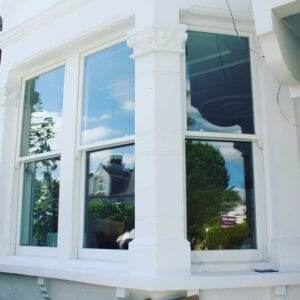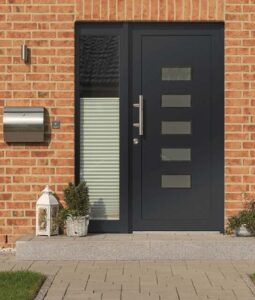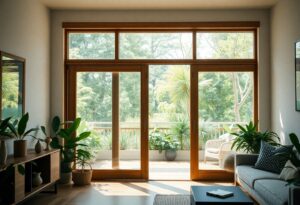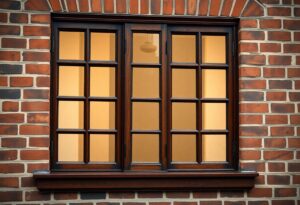Many appreciate the beauty and durability that steel windows bring to various architectural styles. Whether you are enhancing a heritage property, revitalising an industrial space, or adding a modern touch to a contemporary facade, the flexibility of steel windows offers endless design possibilities. By integrating these elements into your projects, you can achieve a striking aesthetic that resonates with both the past and the present. For insights on modern adaptations in this area, check out The Rise Of Heritage Style Steel-Look Windows And Doors.

The Role of Steel Windows in Architectural Design
For architects and designers, steel windows provide a unique opportunity to harmonise functionality and aesthetics. Their structural integrity enables slender profiles that maximise natural light while ensuring durability. You can incorporate these windows into various architectural styles, enhancing the visual character of both heritage and contemporary buildings. With a variety of finishes available, steel windows can complement any facade, offering endless design possibilities.
Historical Significance of Steel Windows
The development of steel windows in the late 19th and early 20th centuries marked a significant evolution in architectural design. Their introduction enabled the use of larger spans of glass, which transformed how buildings utilised natural light. You’ll discover that steel windows were instrumental in shaping iconic structures of the industrial era and remain integral to conservation efforts in preserving architectural heritage.
Aesthetic Appeal and Functionality
Any consideration of steel windows necessitates an appreciation for their aesthetic appeal alongside their practical benefits. Their sleek lines and minimalist style can seamlessly blend into diverse architectural contexts, from modern homes to restored historical buildings. With robust material properties, steel windows enhance security and energy efficiency, making them a sound investment for long-term use.
Hence, when you incorporate steel windows into your projects, you’re not only selecting a product that offers unparalleled versatility but also ensures long-lasting performance. The aesthetic finesse, coupled with their modern engineering, allows for an impressive balance of style and substance. This combination helps you achieve a look that is both sophisticated and practical, catering to your design vision while meeting contemporary standards for energy efficiency and safety.

Integrating Steel Windows in Heritage Facades
Now, you can appreciate how steel windows can add a contemporary touch while maintaining the character of heritage facades. Their slim profiles and durability complement traditional materials beautifully, allowing for natural light and insulation without compromising the aesthetic integrity. When integrating these features, it’s vital to select designs that honour the building’s original architecture, ensuring that your renovations are both respectful and innovative.
Preservation and Restoration Practices
Heritage buildings often require careful consideration when it comes to preservation. Utilising steel windows during restoration can enhance the building’s performance while staying true to its historical significance. It is necessary to follow guidelines that protect the original elements, ensuring the integration of modern features aligns with local conservation regulations.
Case Studies of Successful Integrations
By examining successful integrations, you can gain insight into how steel windows enrich heritage facades effectively. Consider the following examples:
- Victoria Baths, Manchester: Restored in 2007, the steel windows improved energy efficiency while maintaining the original aesthetic.
- London’s Clapham Old Town: In 2015, the integration of steel windows preserved the historic charm while enhancing security.
- Edinburgh Tenements: The 2019 renovation project showcased steel windows that balanced modernisation with traditional architecture.
Studies have shown that incorporating steel windows in heritage buildings not only boosts their value but also their liveability. For instance, in the redevelopment of The Custard Factory, Birmingham, the use of steel windows led to a 40% increase in natural light, significantly improving the indoor environment. Similarly, the conservation work at The Old Post Office, Bristol resulted in reduced heating costs by 25%, showcasing steel’s effectiveness. These case studies highlight the positive impact of strategic renovations, affirming the importance of thoughtful integration in heritage contexts.
The Industrial Application of Steel Windows
The industrial revolution profoundly shaped architecture, and the use of steel windows in industrial settings has become increasingly significant. These windows not only provide durability but also offer a sleek aesthetic that complements the raw industrial feel. Discover more about Integrating Modern Cladding Materials and Architectural … for a deeper understanding of their adaptability.
Characteristics of Industrial Design
On examining the characteristics of industrial design, you will notice that functionality and simplicity are at the forefront. Steel windows encapsulate these elements with their robust frames and minimalist lines, making them an ideal choice for maintaining the industrial character while ensuring longevity.
Enhancing Natural Light and Open Spaces
Behind every successful industrial space is an emphasis on light and openness. Steel windows can be expanded into large configurations, allowing vast amounts of natural light to pour in, which not only enhances the ambiance but also promotes a sense of spaciousness.
Also, you should consider that the abundant natural light provided by steel windows creates an invigorating environment, reducing reliance on artificial lighting and promoting energy efficiency. This design not only fosters a positive atmosphere but also has the added benefit of boosting productivity for occupants. Additionally, ample light and open spaces can dramatically improve the overall aesthetic of your industrial property, enticing visitors and potential clients alike.
Contemporary Facades Featuring Steel Windows
After the evolution of architectural styles, steel windows have become a prominent feature in contemporary facades. Their sleek lines, expansive glazing, and unique aesthetic capability allow you to achieve a modernist appeal while maintaining functionality. This versatility not only enhances the visual aspects of your building but also improves energy efficiency and natural light infiltration, making them an ideal choice for today’s architectural landscape.
Modern Architectural Trends
Any new construction or renovation project can benefit from current architectural trends, which emphasise the blend of sustainability and aesthetic appeal. Incorporating steel windows can set your building apart, aligning with the principles of minimalism while promoting an eco-friendly ethos. By utilising these materials, you can create a striking visual impact that responds to contemporary tastes.
Innovations in Design and Technology
Innovations in design and technology have transformed the way you view steel windows. Enhanced manufacturing processes and materials now offer better thermal performance and durability, ensuring your installations not only look stunning but also serve a significant purpose. With the latest advancements, you can achieve thinner frames and larger panes, allowing for an abundance of natural light while maintaining structural integrity.
Modern developments in steel window technology focus on strength and efficiency. The introduction of thermally broken frames helps to minimise heat loss, making your space more energy-efficient. Innovations in performance coatings provide lasting protection against corrosion and fading, ensuring your windows remain in pristine condition. These advances not only improve aesthetics but also contribute to the overall sustainability of your building, making them a wise choice for any contemporary setting.
Technical Considerations for Installation
Once again, careful planning and execution are crucial when installing steel windows. You will need to assess the existing structure to ensure compatibility and adequate support. Proper installation techniques are vital to avoid issues in the long term. For further insights, Revolutionize Your Design with Hot Rolled Steel Window Profiles can provide valuable guidance.
Structural Integrity and Support
Above all, ensuring structural integrity and adequate support for your steel windows is paramount. Carefully evaluate the building’s framework to ascertain that it can support the weight and dimensions of the windows you plan to install. Proper anchoring and framing will also help distribute loads effectively.
Weather Resistance and Maintenance
Technical specifications are crucial for maintaining the longevity and performance of your steel windows. Adequate weather resistance is achieved through high-quality coatings and proper sealing methods, which will protect against moisture and rust. Regular maintenance checks will ensure that any wear and tear are addressed promptly.
And while steel windows are incredibly durable, they do require some maintenance to uphold their performance. Periodically check for any signs of moisture intrusion and perform touch-ups on protective coatings as needed. This diligence prevents corrosion and degradation and ensures that your investment continues to enhance your property’s aesthetic with minimal fuss.
Sustainability of Steel Windows
Unlike traditional materials, steel windows offer a remarkable solution in sustainable architecture. Their inherent durability ensures that they last longer than many alternatives, reducing the frequency of replacements and minimising waste. Additionally, steel is a 100% recyclable material, making it an environmentally responsible choice that fits well with modern sustainability goals.
Environmental Benefits
Across various applications, steel windows contribute significantly to reducing energy consumption. They possess excellent thermal performance when integrated with modern glazing technologies, which enhances insulation and decreases reliance on heating and cooling systems. This results in lower carbon emissions, ultimately benefiting the planet.
Longevity and Recyclability
Beside the environmental benefits, steel windows are renowned for their longevity and recyclability. The robust nature of steel means that windows can endure harsh weather conditions without compromising on performance, thus ensuring a long service life. When the time comes for replacement, these windows can be recycled without the loss of quality, making them a sustainable choice for your projects.
Windows made from steel are exceptionally designed to withstand the test of time, offering a service life of decades without requiring substantial maintenance. Their high resistance to corrosion and extreme weather makes them ideal for various climates. Furthermore, post-consumer steel is commonly recycled into new steel products, significantly reducing the amount of waste sent to landfills. This ability to be indefinitely reused underscores the sustainable advantage of steel in construction, allowing you to invest in your projects while contributing positively to the environment.
Summing up
So, as you explore the architectural versatility of steel windows, consider their ability to seamlessly integrate into heritage, industrial, and contemporary façades. By embracing these innovations, you enhance your design both aesthetically and functionally, ensuring that heritage charm coexists with modern efficiency. This blend not only preserves the essence of historic structures but also meets contemporary standards, providing you with endless possibilities for creativity in your projects.
FAQ
Q: What are the benefits of using steel windows in heritage buildings?
A: Steel windows offer a myriad of benefits when integrated into heritage buildings. Their slender profiles enable more natural light, enhancing the overall aesthetic of the space. These windows are exceptionally durable, providing longevity without compromising the historic character of the building. Additionally, steel can be finished in various ways, allowing for compatibility with traditional styling while meeting modern energy efficiency standards.
Q: How do steel windows enhance industrial architecture?
A: In industrial architecture, steel windows contribute to the building’s robust and utilitarian aesthetic. Their strength supports larger expanses of glass, creating vast open spaces filled with light. The combination of steel and glass embodies the spirit of industrial design, where functionality meets style. Furthermore, they can withstand the rigours of industrial environments, providing reliable performance over time.
Q: Can steel windows be customised for contemporary designs?
A: Absolutely, steel windows lend themselves exceptionally well to contemporary designs. They can be customised in terms of size, shape, and finish to align perfectly with modern architectural visions. Designers often opt for minimalist frames and expansive glass areas to create a sleek, modern appearance. The versatility of steel allows architects to experiment with innovative forms and designs, making them a popular choice in contemporary projects.
Q: What maintenance is required for steel windows in varying building types?
A: Maintenance for steel windows can differ based on the building type and location. In heritage buildings, regular inspections are advised to check for signs of rust or wear, followed by appropriate treatments to maintain their appearance and functionality. Industrial settings may require more frequent cleaning due to dust and grime. In contemporary designs, maintenance is typically simpler, focusing on cleaning and occasional repainting to sustain the desired aesthetic.
Q: How do steel windows contribute to energy efficiency in buildings?
A: Steel windows can significantly enhance a building’s energy efficiency, particularly when fitted with modern glazing options. Thermal break technologies are frequently incorporated, which help to minimise heat transfer, thereby improving insulation. When combined with low-E glass, they can effectively reduce energy consumption for heating and cooling, making them appropriate for any building type seeking sustainability without sacrificing style.

